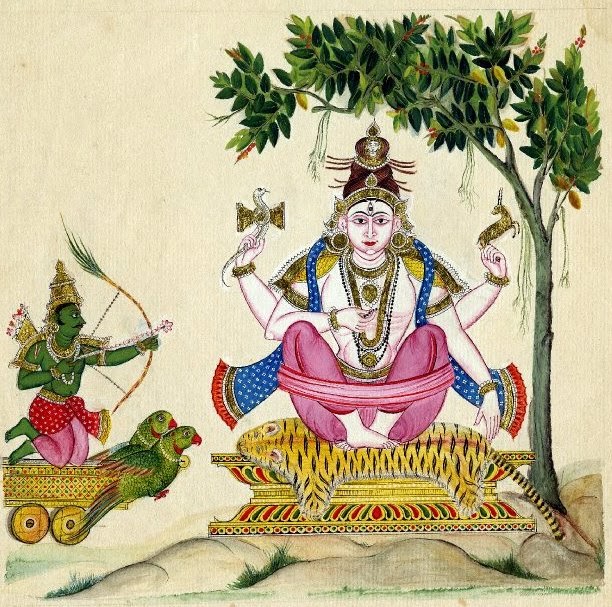What crop is grown more than any other in the world today? Here’s one clue: the Buddha is said to have eaten this on attaining enlightenment. Can you guess the answer? Let me give you another clue: the Greeks called it the “reed in India that brings forth honey without the help of bees”. If your answer is sugarcane, you win a teaspoonful of the sweet stuff!

In the old days, sugar really was a prize worth winning! In 16th century England, sugar was a luxury item, a fine spice that only the wealthy and powerful could afford. The traders who sold sugar were minting money, and soon their name for sugar was “white gold”. It was considered a luxury because there were only a few places in the world where sugarcane was grown and then processed into sugar.
One theory is that sugarcane was brought to Southeast Asia from Papua New Guinea thousands of years ago. It is thought to have reached India fairly early on. Some accounts trace sugar back thousands of years, to the early Sanskrit literature of the Vedic period. There are accounts of sugarcane being grown and sugar made in the Tamil Sangam literature that dates between the 1st century BCE and the 5th century CE. Sugarcane certainly plays a role in our festivals and rituals. It is often offered to the Gods as a way of ensuring a good harvest, or used to decorate houses during the harvest festival. One of the Hindu Gods, Kamadev, the god of love, carries a sugarcane bow. By the reign of the Gupta Empire, around 350 CE, early Indians had already figured out how to make crystallised sugar. In fact the word ‘sugar’ comes from the Sanskrit term “shakkara” which refers to jaggery, or unprocessed sugar. Even the word “candy” has its origins in the Sanskrit word “khand”, or crystallised sugar!
From India the technique of extracting sugar and crystallising it travelled to China and Persia first. Then in the 11th century, the Crusades took place, and victorious Christian knights carried sugar, and the method for preparing it back to Europe. But sugar became a truly global crop only in the 15th century. After Columbus discovered the “new world”, European colonists realised that these new countries- places like the Caribbean Islands and Mexico- were ideal for sugarcane cultivation. And the slaves they were buying from Africa were ideal plantation workers.

When the Abolitionist movement gained momentum in the Americas and Europe, these colonists quietly shifted their plantation to India and Indonesia, where indentured labourers could be put to work. Once again, India became a prominent centre for sugar production.
All through this sugar continued to be a luxury item. Some even believed it had medicinal qualities. Charaka Samhita, India’s ancient text on Ayurveda, says that wine made from sugar is a slight intoxicant that helps cure intestinal diseases and helps digestion. Then in the 18th century, sugar met coffee, tea and chocolate, and took the world by storm. Soon it worked its way into kitchens across the world, and the people of the world became happier and definitely heavier. On average a person today consumes more than 70 grams of sugar in a day. The recommended amount? 25 grams!
Let me tell you one more odd, little-known fact about sugar. How does white sugar become white? Sugarcane juice is processed by passing it through something called bone char- that is the burnt bones of animals. So is white sugar vegetarian? In India, amongst some communities, it is not!
If you’d like to learn more about food, and curious ways in which it has shaped history, join Storytrails on their Bazaar trails in Chennai, Pondicherry and Madurai, or on their Spice trails in Chennai and Madurai.


Archives
- January 2022
- December 2021
- November 2021
- August 2021
- March 2021
- February 2021
- January 2021
- December 2020
- November 2020
- October 2020
- September 2020
- August 2020
- April 2020
- March 2020
- February 2020
- January 2020
- November 2019
- October 2019
- September 2019
- August 2019
- July 2019
- June 2019
- August 2017
- February 2017
- January 2017
- October 2013
Featured Posts
- Tales that pots tell: Keeladi excavations AUGUST 18, 2021
- The Last Grand Nawab: Wallajah FEBRUARY 10, 2021
- How Tej Singh became Raja Desingu of Gingee FEBRUARY 5, 2021
- How Shahjahan seized the Mughal throne JANUARY 28, 2021
- Alai Darwaza – Qutub Minar Complex, Delhi NOVEMBER 21, 2020
- Marking History through British buildings NOVEMBER 17, 2020
- The last great queen of Travancore NOVEMBER 7, 2020
- Brahmi and the evolution of scripts OCTOBER 15, 2020
- The Cambodian King of Kanchipuram OCTOBER 14, 2020
- James Prinsep – the man who read the writing on the wall OCTOBER 10, 2020
- Mariamman – the Village Goddess who travelled SEPTEMBER 30, 2020
- Misnamed Monuments of Mamallapuram SEPTEMBER 28, 2020








